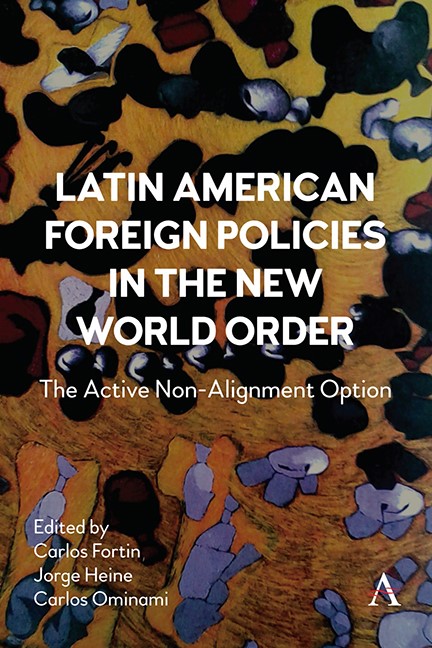Book contents
- Frontmatter
- Dedication
- Contents
- List of Tables and Figures
- Foreword
- Introduction: Active Non-Alignment (ANA) A Doctrine
- Part One The Emerging World Order
- Part Two Active Non-Alignment In The New Geopolitical Environment
- Part Three Active Non-Alignment in the New International Political Economy
- Part Four National Perspectives
- Conclusions—Implications of an Active Non-Alignment (ANA)
- Notes on Contributors
- Index
Chapter Eleven - The Insertion of Latin America in The World Economy
Published online by Cambridge University Press: 15 November 2023
- Frontmatter
- Dedication
- Contents
- List of Tables and Figures
- Foreword
- Introduction: Active Non-Alignment (ANA) A Doctrine
- Part One The Emerging World Order
- Part Two Active Non-Alignment In The New Geopolitical Environment
- Part Three Active Non-Alignment in the New International Political Economy
- Part Four National Perspectives
- Conclusions—Implications of an Active Non-Alignment (ANA)
- Notes on Contributors
- Index
Summary
The Region in the Face of a World Economy in Crisis
The modalities of insertion of Latin America into the international economy have been at the core of the reflections of the Economic Commission for Latin America and the Caribbean (ECLAC) since its creation in 1948. The world economic order has undergone major transformations since the beginning of the post-war period and the same goes for the prevailing economic paradigms in the region. ECLAC has interpreted the evolution of this process from the realities and particularities of the countries of the region. This chapter focuses on a specific dimension of this perspective: the region’s pattern of insertion in world trade. After presenting its main features, it offers some observations aimed at improving the quality of this linkage. They are made against the backdrop of the deep crisis that the prevailing mode of organization of the world economy has gone through in the last four decades.
The defining feature of the world economy from the 1980s onward has been commercial and financial hyper-globalization, which put an end to the era of greater state intervention and control of capital movements known as the 30 glorious years (1945–1975). The neoliberal reforms initiated in the United States and the United Kingdom; the end of the Cold War; the adoption of the so-called Washington Consensus in much of the developing world; and the emergence of China in the world economy were some key milestones in the emergence of a global market with high cross-border mobility of goods, services, and capital, and whose counterpart was the loss of relative power of workers.
The main expression of hyper-globalization in the productive sphere was the proliferation of global value chains in the 1990s and 2000s. Under this modality, transnational companies—generally based in advanced countries—relocate segments of their production processes to developing countries to benefit from lower labor costs, tax exemptions, or other advantages. Several trade and investment agreements promoted this phenomenon, such as the North American Free Trade Agreement (NAFTA), the Uruguay Round agreements of the General Agreement on Tariffs and Trade (GATT), and China’s accession protocol to the World Trade Organization (WTO). In this way, the three great world factories were formed: East and Southeast Asia, Europe, and North America.
- Type
- Chapter
- Information
- Latin American Foreign Policies in the New World OrderThe Active Non-Alignment Option, pp. 143 - 156Publisher: Anthem PressPrint publication year: 2023



